Invitations turned down to businessman's new biennial
by Michel Chevalier
In 2002, Hamburg’s Deichtorhallen Art Center hosted the Art & Economy show, curated by Zdenek Felix. This really horrible, Siemens-sponsored exhibition (in which a quarter of the "art" space was devoted to the completely unreflected presentation of corporate sponsorship promotional material) was made doubly hard to bear because of the complete absence of critical press and/or debates in its wake. The German-language "critique" organs (Springerin/Texte zur Kunst) kept their heads in the sand, as usual. The situation is otherwise in France, currently, in response to what aims to be the "first biennial devoted to the relations between art and entreprise / art and economy." The brainchild of French businessman Bruno Caron, the first Biennale de Rennes opened May 16 and runs through July 20. Several artists and cultural producers have publicly refused invitations to this event.
What follows are some of their statements, originally posted (in French) on email lists or made available to me directly.
They belie the notion (currently hegemonic in the art field) that good art can lend itself to appropriation by anyone, that every audience is worth reaching, that the best subversion is to take the money and run, "like the Sex Pistols."
Of course, recent art-history offers us other famous boycotts and refusals.
Some post-war milestones:
-Paris/Liège/Brussels, March-April, 1955: The Galerie Dutilleul invites the Internationale Lettriste to exhibit Metagraphic Propaganda in April-May of that year. In vain, the gallerist tries to dissuade the IL from producing a poster attacking Le Corbusier. The IL refuse to exhibit and publish the entire correspondence with the gallerist under the title "Les distances à garder" (Potlach #19, April 1955)
-Buenos Aires, Mai 1968: after police cordon off Roberto Plate’s work at EXPERIENCIAS 68, several participating artists destroy their own works and throw the remains in the street.
-Venice, Summer 1968: the Venice Art Academy is occupied by protesting students, and there is talk of occupying the Biennale di Venezia. Police are mobilzed; tracts are distributed calling for the reform of the Biennale. When news is out that the Biennale is under "police protection" Sweden closes its pavillion in protest. Demonstrators at St. Mark's square carry the sign "Sweden says no to Police-Biennale." Leif Nylen chronicles the events in his article "Suddenly last Summer" (Art and Artists, London, August 1969)
-New York 1969-1971: The Art Worker's Coalition conduct several actions against Rockefeller family influence at MoMA.
-New York/Düsseldorf, September-October 1972: following the censorship of a Hans Haacke piece at the Guggenheim's Amsterdam Paris Düsseldorf show, and its subsequent boycott by several artists, one of the these, Marcel Broodthaers, has his "Open Letter to Wagner" published in the Rheinische Post. Its target is a loudly "political" artist who nevertheless didn't join the boycott: Joseph Beuys.
-Cologne, May-September 1981. The Westkunst exhibition, organized by Kasper Koenig and Laszlo Glozer, opens in Cologne. With a budget larger than that of the documenta (and architecture by Oswald M. Ungers) the show purports to showcase "contemporary art since 1939"—yet fails to include any work from the previous decade (the '70s), or even media such as photography and film. The exhibition curators' selection criteria becomes the issue of a public debate; Gustav Metzger, Cordula Frowein and Klaus Staeck even mount a counter-exhibition, Passiv-Explosiv, at the BBK building in Cologne. Their exhibition includes a campaign against a Westkunst/WDR film produced by Wiebke von Bonin.
In the last decade, the HEIL DICH DOCH SELBST anti-Flick Collection campaign has got the most publicity in the German-language art scene, yet it stands out, to me, as the most hypocritical of all art-institution boycotts in that so many of the signatories, unlike the artists mentioned above, have no problem working with, publishing, or being sponsored by "normal" (i.e. non-nazi) capitalists and corporations.
Some mention should be made of the fact that Biennale de Rennes personnel did some "scouting" at the Biennale de Paris in October, 2006. The Biennale de Paris, in contrast to Rennes, is not sponsored by any "grand patron," its brochures and catalogue feature no corporate logos. It is a clever re-launch effected in 2004 by artists and art-thinkers in view of being the "only biennial in the world that is conceived on the basis of artistic realities and not on the basis of political or economic decisions."
Some Biennale de Paris groups and individuals did participate at Rennes—what follows are statements by those who didn't, and it is a pleasure to make their statements available on THE THING Hamburg.
The accompanying images are from an incredibly condescending handbook Bruno Caron had printed and distributed to all his employees: "Aimer l'art contemporain" ("Getting to like contemporary art").
(press < > to see more pictures:)
Letter from Jan-m (Bourse du Travail Parallele) to Raphaële Jeune (Biennale de Rennes)
Hello Raphaële,
I've just realized that it's Bruno Caron who is financing a major part of the Biennale de Rennes. I now realize that my proposals (factory gestures, in-progress and unauthorized use of equipment [French: perruque]) would be totally inappropriate. I thought that the exhibition (a supposed terrain of "reports" on experiences and artistic work) was "neutral," that is, financed by public money, and not by the head of an agro-food group such as Norac. I was surprised by the way that Bruno Caron presents his project (interview on BFM radio, articles in business publications: Challenges, Les Echos...) as revolving around the creation of value between art and corporations, and the added-value corporations can thereby gain. His comments never refer to the staff of his companies (Le Ster, Whaou!, La Boulangère, Clément, les Sandwichs Daunat, …), and the working-conditions they are subjected to. The account of one former Daunat employee sent shivers up my spine: "50 hours a week on the assembly line, it's worse than hell, man, your life has no meaning. I prefer robbing a bank than putting in 50h/week for the likes of Daunat (I did 35 and that was hot enough)."
You guaranteed me conditions favorable for critique, but what can possibly be criticized when the person financing the project could be an object of critique? My contributions are based on mutual trust, and on a minimum of agreement with the participants that one is critical of – and not complacent towards – the head of the company. Michel Foucault said "Let the spoken-to speak!" and I don't believe that this context offers employees a chance to say anything whatsoever about what they are experiencing within the companies of the Norac group. I would thereby not like to see my work associated with a corporate CEO like Bruno Caron. From my point of view, an essential question is: where is one speaking from? From what position? I harbor no prejudices against him as a person, but it seems we are in a bit of a minefield here, because we don't seem to be speaking from the same position. Our interests can only be at odds, and my position – he knows it already – is on the side of the 2500 workers and employees at his companies. He won't give up what he's got, and I won't give in on my demand for equitable income distribution, the fruits of everyone's labor. I like the idea of artists having a word to say, but not in a biased context where all relations are subordinated to the benevolent gaze of the CEO. It would feel too much like exhibiting my practice and the fruit of my labor to my boss. And that's not the artistic territory I'm after.
I was touched by your solicitude and hope you won't hold a grudge. As Julien Prévieux once said
"I see myself under the obligation to refuse your offer."
Jan-m
Letter from Frédéric Lordon (economist invited to work with the Biennale de Rennes) to Jan-mDear Jan-m,
Your letter shows me almost exactly what I must have told Raphaële Jeune at the time, while adding elements which document my categorical but strong suspicions I mentioned to her. A project of artistic or intellectual creation shepherded by a patron, that is to say private financier, immediately loses its real liberty and nourishes cooptations of all sorts ("the company, friend of the arts"), and also exposes those involved to those forms of censorship most perfectly insidious because they are imperceptible. I must say that "corporate residencies" left me especially dismayed. As if it were possible to criticize anything at all while being housed by a company and in the explicit framework of what is a-priori a peace project... I still get staggered by this petty-humanism's inability to realize that there is no critique without conflict (and that's why it's so prone to liberal cooptation)... I'd like to add that I am really in tune with your argument about decontextualization-recontextualization. That's without a doubt one of the most unbearable things about this project.
Very cordially yours,
Frédéric Lordon
Letter from Nicolas Ledoux (Ultralab) to Jan-m and friends
Hello everybody,
A new biennial will see the day next month: http://www.lesateliersderennes.fr/
You will note that its homepage has some uncanny ressemblances to that of the Biennale de Paris, which goes to show that you can recycle anything (...) it offers artists a (paid) residency in a company, then a "high caliber" exhibition, as well as a catalogue... colloquiums, conferences... the whole package! and however thin the presentation may be as yet, I'm sure it will give you something to chew on.
"We consider our In-company Research and Creation Sojourns, or SouRCEs, to be in-vivo interventions which make it possible for gatherings around work to be sites of mutual experience and discovery between artists and members of a company – in our era in which the dematerialization of art and the dematerialization of hyperindustrial production strongly reflect each other within the context of cultural and cognitive capitalism." What gall... at the head, we have a collector/CEO... who has gone a little further than his colleagues and taken the step... now it's a done deal: the entrepreneur-as-artist and the artist-entrepreneur have met each other and can love each other in the light of day... they run into each other on the TGV, visit exhibitions and cutting rooms in the same way, organize cocktail parties and openings, share a good dining table together, so many more affinities... In the old days, they had fun in the intimacy of ateliers, or did each other favors: you like me, I'll lend you my bulldozer; you give me your drawing, I'll lend you my house by the sea... I collect, you work... oh, sweet years in which this was all shut away behind metal blinds and curtains... nostalgia, my friends, nostalgia. I won't be there Saturday... but I already regret it.
Best wishes to you all,
Nicolas Ledoux
Bourse du Travail Parallele (http://barthe.free.fr//btp/btp.html) and Ultralab are participants of the XV Biennale de Paris.
Frédéric Lordon is Research Director at the Bureau d'Économie Théorique et Appliquée (Strasbourg), frequent contributor to Le Monde Diplomatique, and editor of the recent Conflicts et pouvoirs dans les institutions du capitalisme (Paris: Presses de Sciences-Po, 2008).

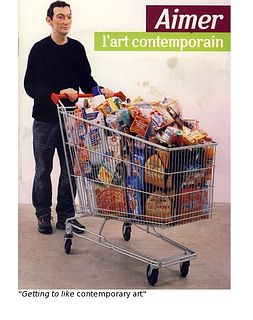

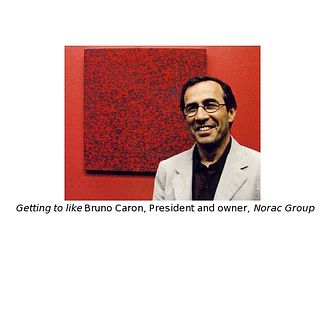

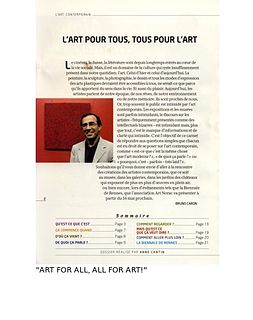

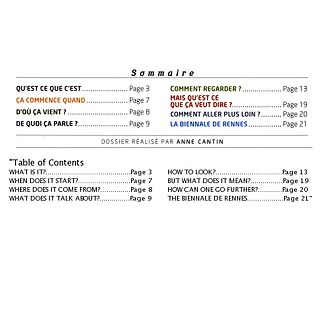

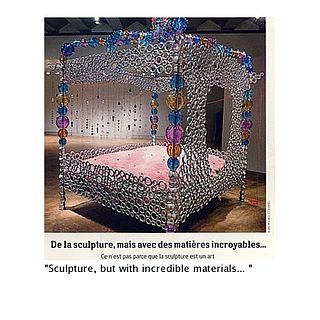

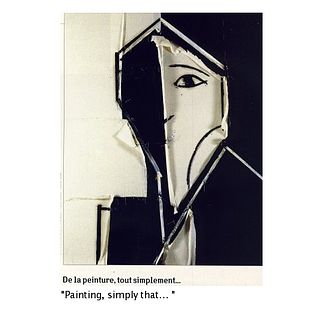

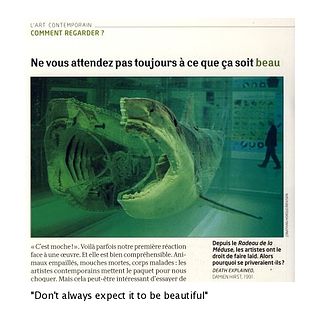

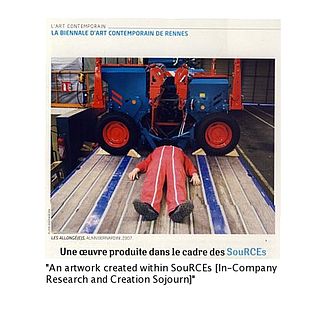

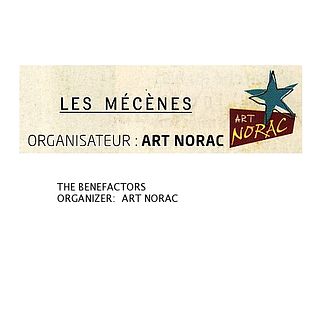





lieber michel - danke für die komplexe darstellung.
mein englisch ist nicht so prickelnd - weswegen ich sicher das eine oder andere zwischen den zeilen nicht so ganz mitkriege - anyhow: das ablehnen - die geschichte des " i would prefer not to"
ist ein faszinierendes gebiet - und wenig dokumentiert. danke.
auch deswegen: der zitierte film "westkunst" ist selbst ja auch eine künstlerische produktion und verstand sich durchaus als beitrag zur ausstellung - wurde mir erklärt. er beinhaltet und bebildert spannenderweise sinnlich erfahrbar positionen, die du in deinem text
zitierst und ist eine sehr tolle zeitreise . bei interesse mache ich ihn gern einmal zugänglich :-)
---------
westkunst / film von helmut herbst ( hamburger filmemacher und mitbegründer der selbstverwalteten hamburger filmförderung- filmbüro e.v.) und friedrich heubach -
geld dazugegeben hat es dafür vom wdr - redaktion - wie oben genannt: wiebke von bonin
*durbahn
Liebe Durbahn,
vielen Dank für das Feedback. Ja, es ist fast ein Understatement zu sagen, dass das Ablehnen in der Kunst (aus "Not", aber auch als absichtliches Statement und symbolische "Produktion" im vollen Sinn des Begriffs) wenig dokumentiert ist.
Die Anekdote über Westkunst ist basiert auf:
- einer 8-seiligen Notiz im vergriffene Buch "Gustav Metzger: damaged nature, autodestructive art" (London, Coracle Press, 1996, S. 94-95)
- verscheidenen journalistischen Texten über Westkunst im Netz.
Das Buch enthält die Info: "it (die Passiv-Explosiv Ausstellung) includes a campaign against a Westkunst/WDR Film. GM (Gustav Metzger) (...) addresses the Museum ICOM conference in Düsseldorf on the subject of the disputed film."
Dass heisst Metzger/Frowein/Staek waren gegen "den" Film... aber welchen genau? Es gab nämlich mehrere. War es der Film von Helmut Herbst, den Du hast, Durbahn, oder der von Ernst Mitzka ("Kultur als Gegenstand der Kunst", den ich ziemlich gut finde), oder noch ein anderer , was wahrscheinlicher ist?
Es wäre super, den genauen Grund für die Aufregung zu kennen (Künstler gegen Journalisten: noch ein spannendes Thema!).
Ich habe leider keine Quelle oder Dokumentation über die Gegenausstellung gefunden: Passiv-Explosiv Kataloge sind nicht zu finden (anyone out there have a copy?), und Metzger ist sehr schwer zu kontaktieren (man muss angeblich vor seiner Tür in London stehen und auf ihn warten... kein Telefon oder Internet).
Viele Grüße,
Michel
ich habe in meiner sammlung den film von helmut herbst (auf video) und meine mich zu erinnern, dass es wirklich mehrere filme - auch als beitrag zur ausstellung verstanden - gab.
alles genau wissen müßte wohl helmut herbst - :-)
mal sehen...
dd
Kathrin Wildner's editorial notice (posted yesterday, after an initial correction at my request) presents either a misreading or a distanciation from my article.
Here's why (4 points):
******** ******** ********
1. I am NOT speaking from an "Antiauthenticismus-Diskurs" perspective, that would see shortcomings in cultural production that strives for integrity.
As I see it (+ taking to heart the caveat that a reading can naturally exceed the intention of the author), the approaches I listed are of 2 sorts:
-refusals of invitations that ARE INDEED based on a notion of integrity that draws the line at certain instances of compromisions and collaboration (due to concerns of ethics, art-politics, or good ole "project-coherence")
-boycotts and sabotage of events to which the activists were not invited. These are not without risk, naturally, because they antagonize the powers-that-be in that "small world" (Metzger) that is contemporary art. And the "distance" they manifest to those powers is ALSO based on a notion of integrity (of a group/scene as counterhegemonic/alternative, of an art approach as having "consequences")
My essay, in a way, contains both: Jan and Frédéric refuse an invitation, and I, performatively, am trying to do my small part to sabotage Rennes, subvision, and the notion (certainly outdated, if it was ever true) of the "good (millionaire) patron."
******** ******** ********
2. I find the formulation "in Sorge um das eigene integere Ansehen ringen" somewhat moralistic and trivializing. As Bourdieu's diagnosis of XIX century literature and art (Les règles de l'art) shows, it's illusory to believe that voluntarism "that doesn't care what others think" can give way to lasting and durable emancipation from pressures exercised from temporal powers. Bourdieu highlights those cultural producers who instituted, piecemeal, social fields that have an internal logic.
Of course the Internationale Lettriste members had what one could describe as "Sorge um das eigene integere Ansehen" within the group!
And that is a quality, both of the group and of its members!!
(see also Gramsci's use of the word "conformity").
******** ******** ********
3.(...) "als auf widersprüchliche und lustvolle Haltungen verweisen"
My essay contains not one iota of sentiment that "integrity" and "lustvolle Haltung" are in opposition to each other. I actually did everything I could to show that exercising integrity can be REALLY fun (as punk discovered, and Saul Alinski, knew: the heretical "fuck you" gesture that unveils the emperor without clothes, that brings down edifices and artifices).
"Widersprüchliche" is something the groups I mentioned are NOT, they display a keen and admirable coherence.
Read Jan's statement: he says "Our interests (Caron and himself) can only be at odds" — and that's Jan's reason for refusing to participate at Rennes (his gesture is also a refusal of that so-very-arty, and conceptually deficient, "ambivalence").
******** ******** ********
4."den eigenen Kunstmüll auf die Straße werfen oder „Take the money and run“......"
This passage mixes up and confuses the distinctions I tried to carefully elaborate.
1. The Argentinean protest ("Kunstmüll") was named as a milestone.
2. I wrote "(Jan and Frédéric) belie the notion (currently hegemonic in the art field) that (...) the best subversion is to take the money and run, "like the Sex Pistols.""
--->"belie" in English means: to prove false, to run counter to.
(and, need it be said, the Sex Pistols are hardly my favorite punk band!)
So much should be clear, then: according to my text the "take the money and run" attitude is in NO way to be seen as a "Möglichkeiten der Verweigerung."
As I see it (and this is the problem, in a nutshell), the "take the money and run" position has NOWHERE to run to, except perhaps a naive belief in "individual salvation," buttressed by (mainstream-derived) "gangsta" delusions.
When Artist-A says "those stupid collectors buy my stuff, but I know I'm selling them shit," it is always the collectors and the market who laugh last.
The Internationale Sitationniste already knew, and acted on, this in 1961 (5e Conférence de l'I.S. à Göteborg).
If you've seen the Biennale de Paris catalogue, you know what kinds of jobs Jan has to do to make ends meet. He could have been paid a big fee to participate in Rennes, but he refused — to the credit of his artistic project.
******** ******** ********
These questions are essential to me and my art-field-practice (the project I initiated in 2003, "target: autonopop," has focused precisely on the issue of art-market cooptation and neutralization of resistant counter-/sub-cultures).
My hope, with subvision in mind, is that critically-informed — and organized — artists will prevent what threatens to be a re-run of the '90s.
If any of you feel an affinity to what I've written here, please read (and, perhaps, sign) the collective statement at:
www.wirsindwoanders.de/files/demo.php
Herbert Hossmann requested that I post the following message.
Lieber Michel,
mit Interesse habe ich den Schriftwechsel zwischen Durban und Dir gelesen. Zur Ausstellung „Passiv-Explosiv kann ich etwas beitragen, da an dieser Ausstellung Anna 0ppermann mitgearbeitet hat und ich ihr bei ihrer Installation in der Kölner Hahnenburg geholfen habe. Während des Ausstellungsaufbaus haben wir Gustav Metzger und Cordula Frowein kennen- und schätzen gelernt.
Wenn ich mich recht erinnere war es Klaus Staeck, der die Idee hatte, dem 7 Mio DM teurem Prestigeunternehmen „Westkunst“ von Kaspar König und Laszlo Glozer mit einem Künstlerstatement etwas entgegen zusetzen. Die Künstler kritisierten an der Westkunstausstellung die einseitige Orientierung der Moderne seit 1939 auf das westliche Europa und die USA. Sie bemängelten, dass die Ausstellung darauf verzichtete, die Auswirkungen des Faschismus und des II. Weltkriegs auf die Kunst darzustellen und alle politische Kunst unterschlagen würde. Als skandalös bezeichneten sie es, dass König und Glozer offenbar keinen Nerv, keine Mittel und/oder keine Zeit einbrachten, die Entwicklung der Kunst in den siebziger Jahren zu präsentieren. Statt dessen hatten sie den Kölner Galeristen Rudolf Zwirner beauftragt, in einer Ergänzungsausstellung „heute“, die voll in das Ausstellungskonzept der Westkunst integriert wurde, „die gegenwärtige aktuelle Szene, die maßgebend für die Auswahl der Künstler der historischen Ausstellung sei (König im „heute“-Katalog)“, zu zeigen. Die „heute“ Ausstellung bestand ausschließlich aus Galeriekunst (vorrangig männliche Malerei) und wurde meines Wissens auch allein von den Galerien bezahlt.
Mit „Passiv-Explosiv sollte eine konstruktive Kritik zu „Westkunst“ und „heute“ aus der Sicht der Künstler formuliert werden. „Passiv-Explosiv“ verzichtete bewusst auf Kunstwerke oder Fotografien enthielt ausschliesslich Texte, Bücher, Zeitungsausschnitte, Fotokopien etc und war auch dementsprechend spröde und für das normale Kunstpublikum wenig attraktiv. Ein Katalog wurde nicht hergestellt. Dokumentiert ist „Passiv-Explosiv“ als Ausstellung von Gustav Metzger in seinem Katalog zur Retrospektive in der Generali Foundation Wien 2005. Die für „Westkunst“ produzierten Filme, insbesondere die von Helmut Herbst (Happening – Kunst und Protest1968) und Ernst Mitzka (Die Kultur als Gegenstand der Kunst) erwähnen “Passiv-Explosiv“ nicht.
„Passiv-Explosiv“ war stark als Protest vieler junger Künstler, die in das Projekt viel Zeit, Kompetenz und Arbeit gesteckt hatten. Dass sie lediglich einer Gustav Metzger Ausstellung zu gearbeitet hatten, war ihnen damals nicht bewusst.
Die junge Kunst an die Galerien zu verhökern wurde damals von den protestierenden Künstlern als Angriff des Marktes gegen die Bestrebungen junger Künstler verstanden, sich aus der Abhängigkeit des Marktes und der Galerien zu befreien. Diese Bestrebungen sind wirkungslos geblieben.
Gruß
Herbert